Carambola
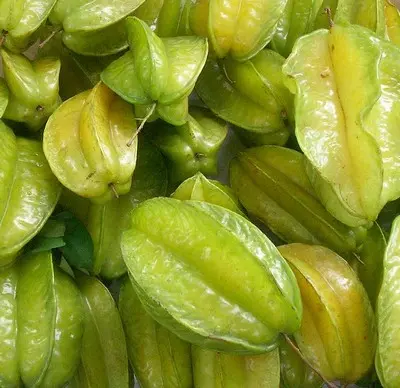
-Ripening Carambola or star fruit, as it’s commonly known.
About a year ago, my friend Vivienne, from Florida, sent us a box of ripe Carambola fruit from her tree.
We had tried some locally purchased ones before, marketed as star fruit due to their shape. In the Caribbean, they’re known as Carambola to avoid confusion with another tropical fruit. While the local ones were interesting, Vivienne’s were a game-changer.
One bite, and oh my gosh! These perfectly ripe fruits were:
- Yellow with a rosy hue
- Firm
- Crisp
- Very juicy with little pulp
- Slightly sweet
- Slightly acidic
- Subtly floral
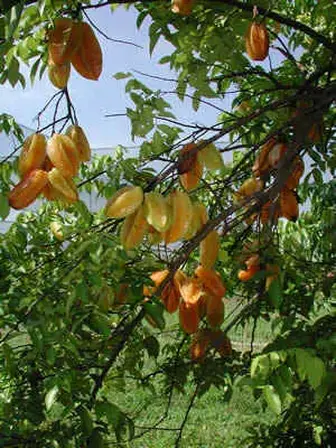
-Tree-ripened fruit.
Perfectly ripe Carambola is the most refreshing fruit I’ve ever tasted, especially during a freezing Wyoming winter.
Most Carambola fruit is sold unripe, characterized by being:
- Yellow with a green hue
- Having green on the ridges
- Oxalic
- Not sweet
- Lacking floral aroma
- More crisp than juicy
Given time, unripe fruit will ripen, but they don’t develop the sweetness and floral aroma of tree-ripened fruit.
Ripe fruit quickly becomes overripe in just a couple of days. They:
- Lose the rosy hue
- Rapidly develop brown ridges and spots
- Have an off flavor
- Are soft
- Are watery
Overripe fruit turns rotten in less than a day.
Florida
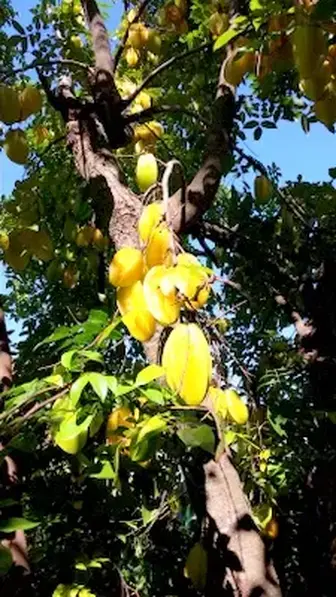
-Vivienne’s tree.
Fast forward to a year later:
- We’re living in Florida
- Vivienne calls
- Her Carambola tree is full of ripe fruit
- Others are harvesting the fruit
- Come and get some before it’s gone
Don’t need to ask me twice. It’s an hour and a half to Vivienne’s, and it’s Carambola picking time!
The Tree
("Carambola is a beautiful and unusual tree. The fruit crop peaks twice a year. But the tree blooms while fruit develops and ripens. So there’s usually some ripe fruit available most of the time.
At Vivienne’s
Vivienne’s vivacious smile and sparkling eyes welcome me. It’s always good to see her. Even after a week of harvesting by others, her tree is still full of ripe fruit.
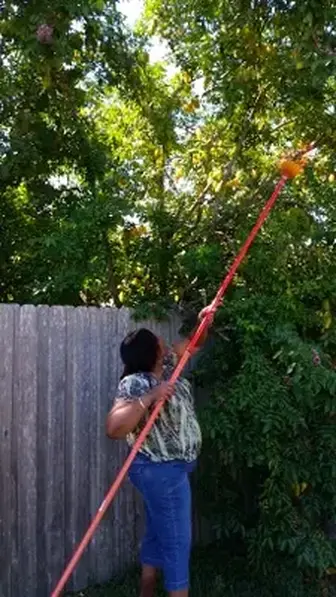
-Vivienne harvesting.
Tree-ripe fruit falls at the slightest touch or branch movement, making it easy to harvest. However, dropped fruit is bruised and quickly spoils, so disturbing branches is bad, and any wind is devastating.
Fruit not reached by hand is harvested using a small basket mounted on a long pole. Just touch a ripe fruit, and it falls into the basket. Fruit not falling when touched is left to ripen. Vivienne grabs the pole and shows me how.
From the quantity of flower buds to overripe fruit, I’m overwhelmed. As a kid picking berries, the first ones picked never make it into the bucket. So it is with Carambola.
I don’t think human history would have been the same if Carambola trees existed on the African plains. Our distant relatives would never have come down from them. And we’d still be up there eating Carambola fruit. 😊
Back Home
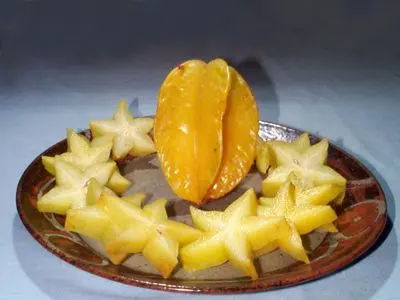
A nice visit and a large box of fruit later, it’s back home.
And from personal experience, there’s nothing more refreshing and revitalizing than a chilled tree-ripened Carambola fruit eaten on a hot Florida day. And just one fruit is never enough.
So, Carambola is a must-have tree for the yard if you live in the subtropics.
Thanks, Vivienne. And a special thanks to Ian Maguire, who owns some of the images above. Yes, I was having too much fun picking and eating Carambola to take pictures.
✨
Cheers, D 🌴🌊

